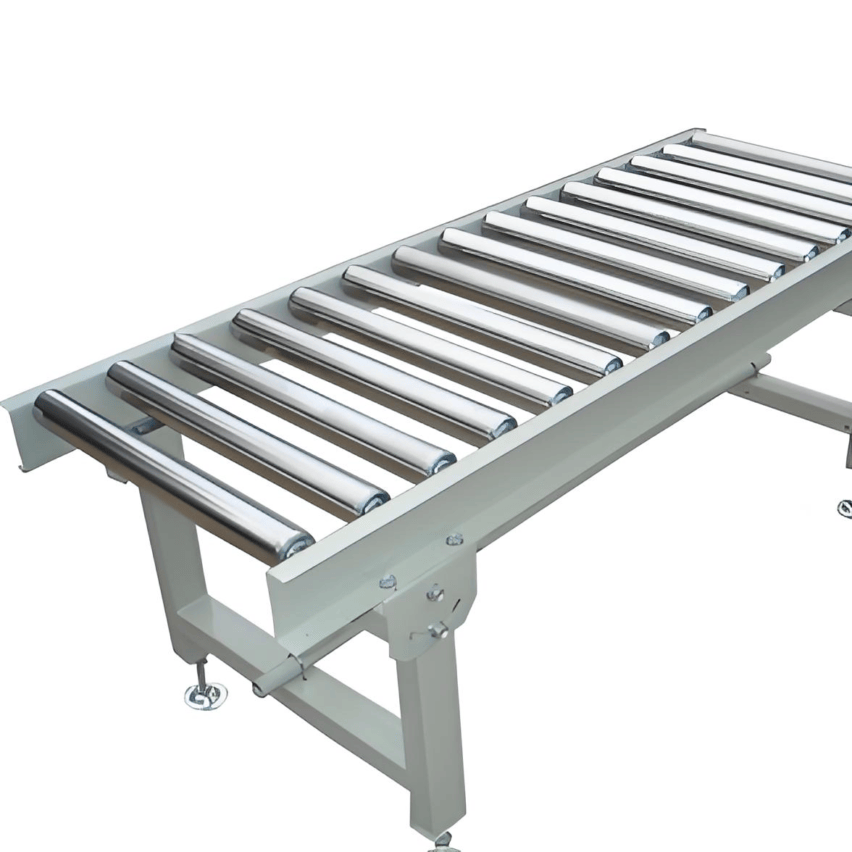"Production line stuck in conveyor? Losing over $800,000 per month in downtime!"-This is the real dilemma faced by many manufacturing enterprises. Smart conveyor lines can easily cost millions of dollars, leaving decision makers with the most anxious questions.How long will it take to make this money back?In this article, we will dismantle the underlying logic of cost recovery, and use real industry data to tell you that choosing the right strategy and getting your money back in 2 years is not a myth.
I. The cost black hole: where is the money spent?
central misconception: Focus on the purchase price of the equipment and ignore the full life cycle costs.
True cost components::
- explicit investment(accounting for 60%-70%)
- Acquisition of equipment: Basic drum line about 500,000 per line, maglev smart line up to 2 million +
- Installation and commissioning: 15%-20% of the equipment price, complex scenarios over 30%
- system integration: PLC control + sensor network, approx. 25% of total investment
- hidden costs(Swallowing 20%-40% profits)
- Stoppage of production losses: Industry average cost of downtime5000 Yuan/hour
- energy wastageConventional conveyor lines account for 12% of production costs, while intelligent lines can be reduced to 7%.
- Maintenance traps: Annual maintenance of poor quality equipment up to 20% of the purchase price
Case Direct: After a lithium company invested in the Fruit and Chestnut Smart Maglev line:
- Space utilisationElevate 40%Save 800 square metres of storage rent
- Reduction in manpower70%Annual labour cost savings of $4.2 million
personal recommendation: Before signing the contract, suppliers must be required to provideFull Cycle Cost Measurement Sheet, quantifying the full risk of power consumption, maintenance, and shutdowns!
II. Payback Calculator: 3 Key Figures for Life and Death
soul searching: Why are you dragging it out to 5 years when your peers have a 1 year payback period?
actuarial modelling::
plaintextmake a copy ofPayback period = (total investment - policy subsidy) ÷ (annual cost reduction + annual efficiency gain)Core variables disassembled::
| norm | Industry averages | Optimised potential |
|---|---|---|
| Manpower replacement | 1 smart line ≈ 8 workers | Magnetic levitation programmes up to12 people |
| Efficiency Gain | Capacity Enhancement 15%-25% | Dynamic dispatch systems canSoaring to 40% |
| loss on failure | Average downtime of 16 hours per month | Predictive maintenanceReduced to 1.5 hours |
| Energy efficient spaces | Reduced power consumption 5%-10% | Inverter motor + AI speed controlPower Saving 35% |
I'll show you.: An automotive plant invested $3 million in an intelligent conveyor line:
- Annual labour cost savings: 12 persons x 80,000 per person =960,000
- Capacity enhancement gain: Increase production by 30% × annual output value of 20 million =6 million
- Annual gross proceeds.6.96 million→The payback period is only 5.2 months!
The truth about the industry:.Industry average return on investment for 15%-25%Behind it, hides the head company40%+ Secrets of Profitability--The key is the activation of "efficiency gains".
Third, the shortening of the period of practical strategy: spend less and earn more money of the ruthless tactics
lesson learnt through blood and tears: One company added $1.5 million to its remodelling after three years because it neglected modular design!
Three axes to reduce costs and increase efficiency::
- staged approach
- Initial basic functionality to meet current capacity (e.g. power drum line)
- reserveManipulator Interface/expansion slot, late addition of AI vision
→ Initial investmentReduce 40%Recovery pressures sharply reduced
- Energy efficiency leverage
- Locked IE4 class inverter motor (power saving compared to IE2)15%)
- Suppliers are required to provideNo-load/full-load power consumption measurement report
- Policy dividend capture
- Intelligent manufacturing special subsidy (maximum)Equipment model 30%)
- Energy efficiency retrofit tax credits (e.g., in one province)Credit against income tax 12%)
Data empirical evidenceHuizhou new energy vehicle factory through the "policy + modularity" combination punch:
- Access to subsidies1.8 millionActual inputs pressed to $4.2 million
- Phased loading of AI QC module, yield rateFrom 92% → 99.9%
personal insight:.Expensive ≠ good, saving ≠ earning! UseROI inversion methodSetting procurement red lines: programmes with a payback period of >3 years are eliminated outright.
Fourth, the industry back to the speed list: your track ranked how?
destabilise perceptions: Logistics and warehousing payback faster than car manufacturing?
Comparison of measured data::
| sector | Typical payback period | revenue accelerator |
|---|---|---|
| Lithium manufacturing | 1.2-1.8 years | Magnetic Levitation Line Helps Production BeatUpgrade 300% |
| E-commerce logistics | 1.5-2 years | Sorting efficiencySpeed Up 40%Zero error rate |
| 3C electronics | 2-3 years | Flexible changeover timeFrom 4 hours → 25 minutes |
| food and medicine | 2.5-4 years | Improved cleanliness level reduces quality control costs30% |
A cautionary tale of counter-examples: A packaging plant for failure to match material characteristics:
- Chain link line for precision circuit boards→Shock rateDa 5%
- Losses after modification of PU belt lineReduced to 0.31 TP3TSave $800,000 a year in rework costs
The Iron Law of Decision Making:.Recovery period ≠ absolute value! Car factory saves 1 hour of downtime = 50k revenue, toy factory may only be worth 5k - figure yours out!Time unit priceThat's the way to go.
Exclusive Data Wall: The Truth Hidden in Earnings Reports
▶ Percentage of smart conveyor line investment by leading companies.18%-25% of total investment in production lineBut the contributionCost Reduction Benefits of 40%+
▶ Maglev smart line vs. conventional drum line: lower total cost over 5 years37%(including power consumption/maintenance/collapse losses)
▶ Industry Forecast 2025: conveyor lines with integrated predictive maintenance, payback periods to beCompressed to less than 14 months
Final Blitz: While your conveyor line is down, competitors are using intelligent systems toSwallow your order.-This is the ultimate yardstick for investment decisions.
(Note: Data quoted from Fruit and Chestnut, Kunming Intelligence, industry white papers, in line with mobile reading habits)













